Maybe you have the same experience – after a few days of standing still, your car just won’t start. The battery has been discharged
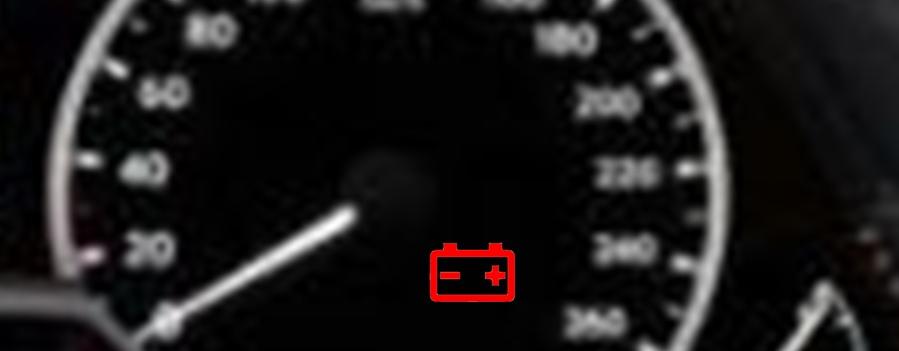
Of course, there may be more causes. The battery itself may be faulty, the charging system may also be the problem.
However, one of the reasons could also be excessive current draw from the battery of a parked vehicle, either due to a fault or due to an unprofessional installation of electrical equipment.
Modern cars contain a wide variety of electrical and electronic equipment. As long as the car is started, there is no problem with their power supply. But if the engine is switched off, these devices should be automatically put into a state of minimum consumption in a short time. so that the battery is as little loaded as possible and ready for the next start.
How long can the car be parked before it will start
Car manufacturers guarantee a standing time after which the car should still be able to start. This is usually 40 to 50 days. This then implies a maximum drain on the battery when the car is at rest, which depends on the size of the car battery.
Examples of maximum current draws for a 50-day starting guarantee:
Battery Current max.
44Ah 13 mA
70Ah 20 mA
95Ah 28 mA
When excessive battery discharge is suspected, it is therefore advisable to measure this resting drain to see if it is higher than the permissible drain.
Disadvantages of traditional measurement methods
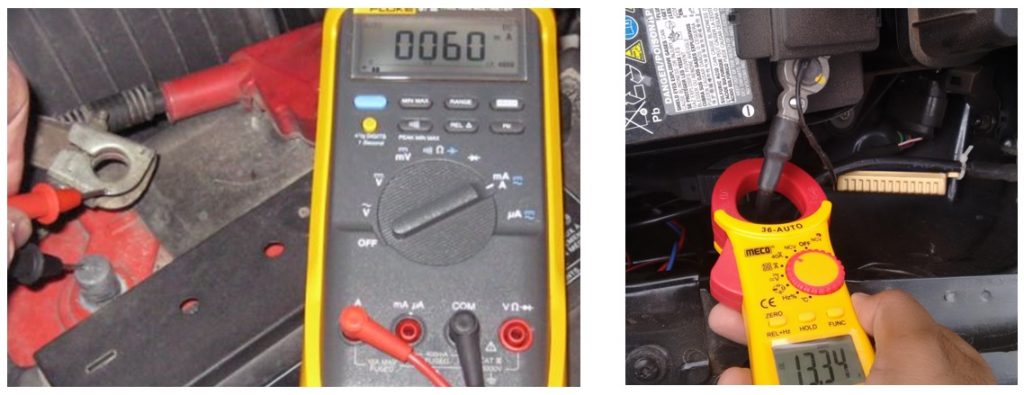
Digital multimeters are usually used to measure the battery draw.
However, their use has several disadvantages:
● Disconnecting the battery
When measuring current by putting the instrument in series with a circuit, it is necessary to disconnect one pole of the battery. This is therefore a significant interference with the vehicle’s wiring, which is not recommended for modern cars. This is because disconnecting the battery will (or may) interrupt the electricity supply to the equipment in the vehicle.
● Current surges
When connecting the meter to disconnected battery terminals, but also when changing the meter range, a large current surge occurs. This often results in the protective fuse on the instrument breaking.
● Problematic simulation of the vehicle’s resting state
It is difficult to induce a standard vehicle resting state during the measurement as the battery compartment must be open. The measured current values will therefore differ from the state when the car is properly closed and locked.
● Difficulties with long-term measurement
The switching off of the electrical equipment after the engine is switched off and the car is locked is gradual, so that the minimum consumption is only reached after a certain time has elapsed. If the measuring instrument is held in the hand all the time, the measurement is tiring.
● Vehicle safety
The vehicle, as it is open when measuring, must be under constant supervision.
A solution that eliminates all of the above disadvantages is LeakTest – a device for monitoring the discharge current of the car battery.
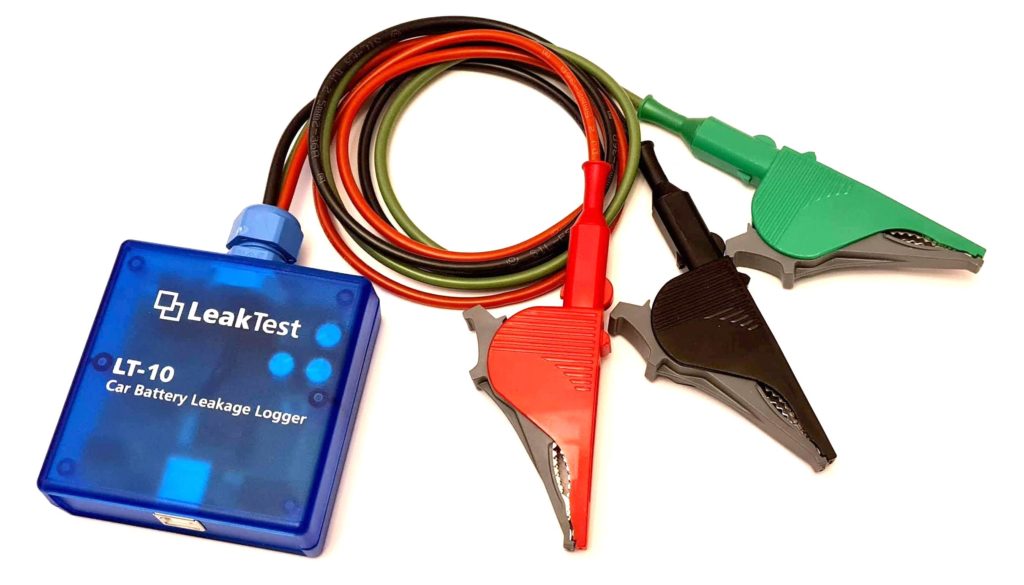
LeakTest – what it is
LeakTest is an electronic device designed to monitor the current leaking from the battery while the vehicle is at rest. It has no power supply of its own – it is powered by the car battery when measured, without affecting the measured values.
It has no controls. The three hard-wired measuring cables are fitted with large strong crocs. It also includes a USB connector and several built-in LED indicators.
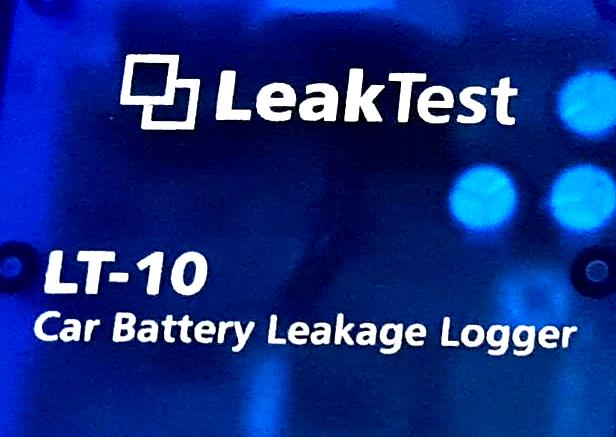
LeakTest – main advantages
● The vehicle is properly closed and locked during the measurement
● No interference with the vehicle’s electrical installation is required (e.g. disconnecting the car battery, etc.)
● No operator is required during the measurement
● The measurement can be carried out anywhere, e.g. even during normal parking in a public area.
● The measurement is not time-limited, it can take place for example overnight or for several days.
● No special knowledge is required
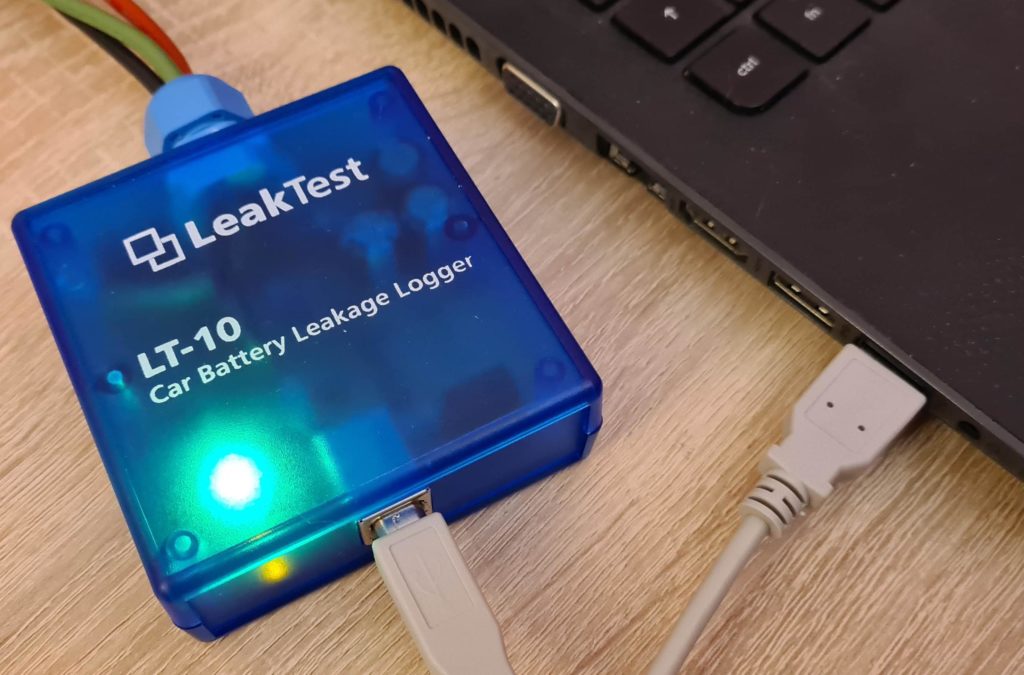
Other features
● It does not contain display or controls, the operation mode is indicated by LED lights.
● Setting of measurement parameters is done in advance on a PC using the LeakView application
● Does not require its own power supply batteries
● Can also be used to measure battery charging current (automatically distinguishes current direction)
● Also measures car battery voltage
● Small size (70 x 70 x 25 mm) and light weight
● PC software LeakView for evaluation of the measurement is available free of charge
LeakTest – how it connects
The LeakTest connects to three points using step clamps:
● to the positive battery terminal
● to the negative battery terminal
● to the vehicle body.
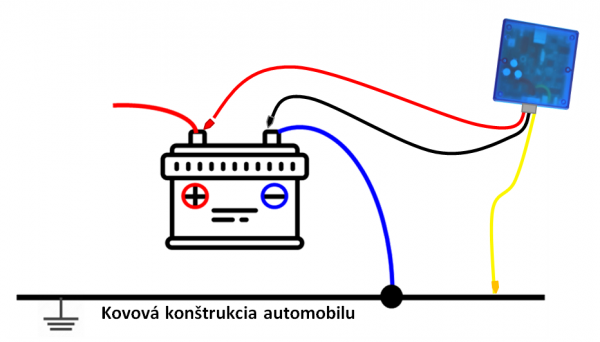
LeakTest – how it measures
The measurement consists of three steps:
1. Setting the parameters
The LeakTest is connected to a computer using a USB cable, where the required parameters (recording period, number of measurements) are set in LeakView.
2. Connection to the vehicle
Once connected, the set measurement starts automatically, the measured values are stored in the memory.
3. Obtaining the results
After the measurement is finished and disconnected from the car, LeakTest is connected to the PC again, the LeakView program displays the measured values in tabular and graphical form.
LeakTest – how it works
LeakTest records currents in the range of approximately 5mA to 30A.
To obtain accurate data, the value of the earth resistance, i.e. the connection between the negative terminal of the battery and the vehicle’s frame, must be entered into LeakView.
What values are stored in the memory during the measurement
● A value representing the magnitude of the current
● Current direction information (charging or discharging)
● Car battery voltage value
● Time stamps of each record
Would you like to know more?
Watch our video tutorials:
How to connect the LeakTest to the vehicle
How to find out the earthing resistance
Download:
LeakView (PC application) Problems with downloading?
(Google Chrome browser is required to run the application.)
Recommended price: 175 EUR excl. VAT
Would you like to order?
Contact us: info@leaktest.tech